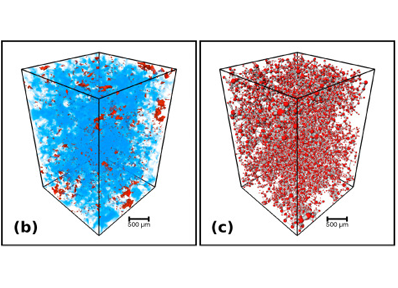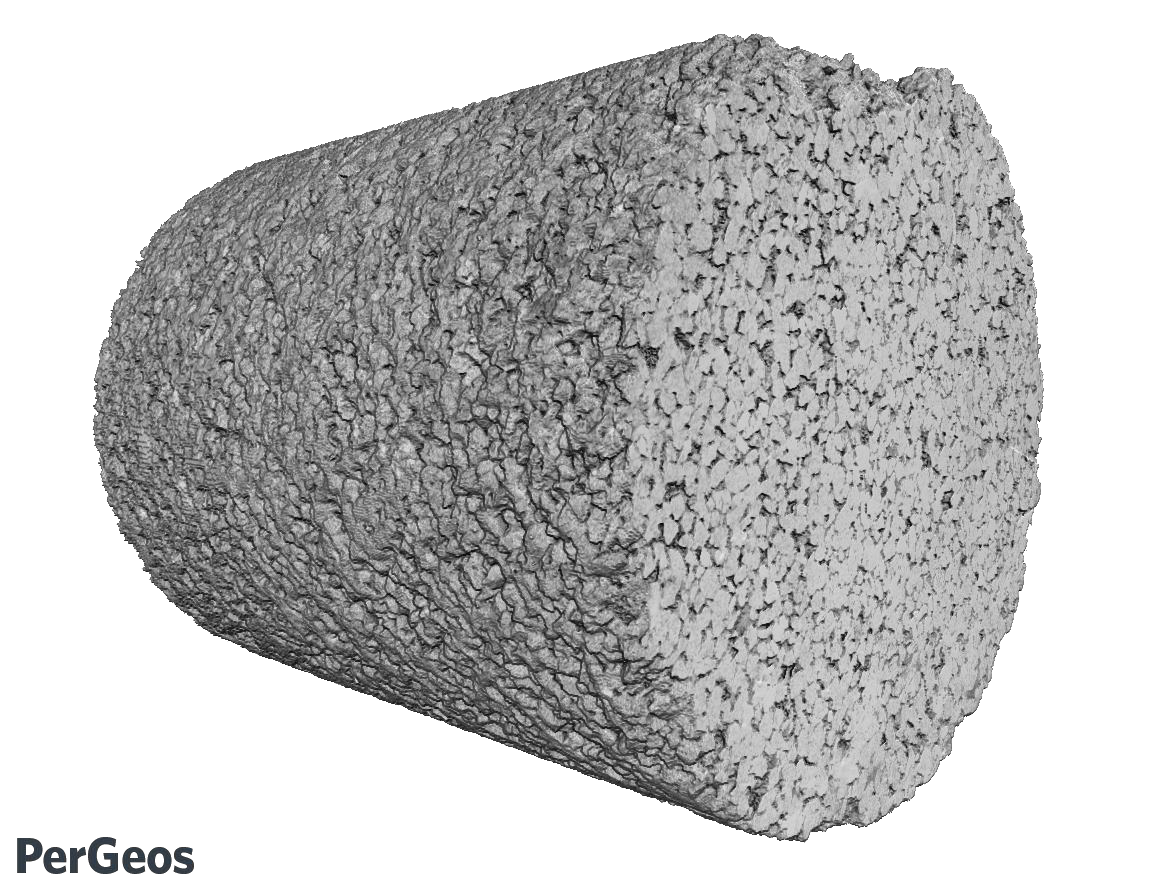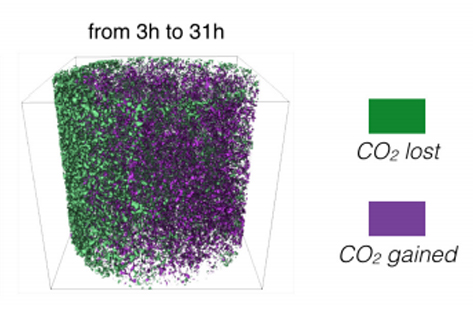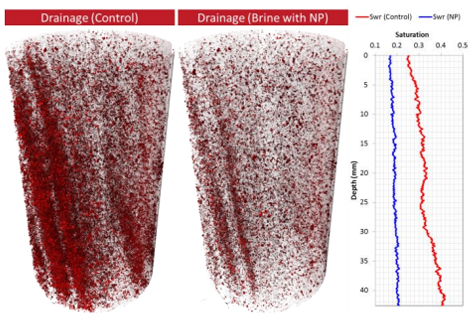Welcome to the PerGeos Use Case Gallery
Below you will find a collection of use cases using PerGeos Software. Based on the technology of its predecessor Avizo Software, PerGeos is a robust software platform for visualizing, processing, and analyzing 2D and 3D digital rock image data.
These use cases include scientific publications, articles, papers, posters, presentations or even videos that show how PerGeos is used to address various scientific and industrial research topics.

Pore network analysis of Brae Formation sandstone, North Sea
Generating an accurate reservoir model is of critical importance in forecasting the lifespan of hydrocarbon reservoirs and estimating the efficiency of carbon capture and sequestration. One critical parameter controlling the flow of fluids within subsurface reservoirs is the fraction of effective or connected pore spaces in the reservoir. […]
To quantify the connectivity of the pore space, it is therefore necessary to combine high resolution visualization of pore spaces with bulk... Read more
Paul-Ross Thomson; Mark Jefferd; Brett L. Clark; Domenico Chiarella; Tom Mitchell; Saswata Hier-Majumder

Analyzing Full Micro-CT Image of a Berea Sandstone Mini Plug and the Associated Challenges
X-ray micro-CT imaging is becoming an integral part of rock characterization processes. Large data size, user bias, and accuracy of the results are some of the challenges associated with analyzing micro-CT images of rock samples.
In this article, the PerGeos Digital Rock Analysis software is demonstrated to analyze the full micro-CT dataset of a Berea sandstone mini plug. The analysis is done in blocks using a PerGeos recipe (i.e. a macro) and a block-processing script. The results are... Read more
Arash Aghaei - Thermo Fisher Scientific

Pore-scale evolution of trapped CO2 at early stages following imbibition using micro-CT imaging
Despite its major influence on storage capacity, CO2 plume migration rate, and rates of CO2 dissolution and mineralization, there are outstanding questions regarding the mechanisms, times scales, influence of geological heterogeneity, and degree of residual trapping. The aim of the present study is to track temporal evolution of residually-trapped scCO2 ganglia during the early stages following imbibition, extract critical parameters such as fluid phase connectivity and scCO2 cluster size an... Read more
Department of Energy Resources Engineering, Stanford University | Lawrence Berkeley National Laboratory, Earth and Environmental Sciences

Pore-Scale observations of the effect of surface treated nanoparticles on drainage processes
In this study we observe, using pore scale X-ray micro-CT imaging and advanced petrophysical analysis, how surface treated silica nanoparticles improve sweep efficiency of n-octane in drainage corefloods. Specifically, upon injection of n-octane into a brine saturated core, preferential flow paths are observed and attributed to both viscous instability and rock heterogeneity; when the displaced phase contains a modest volume of nanoparticles, the same preferential flow paths are suppressed re... Read more
Department of Petroleum Engineering, The University of Texas at Austin | Departments of Chemical and Petroleum Engineering, University of Calgary | Materials & Structural Analysis, Thermo Fisher Scientific